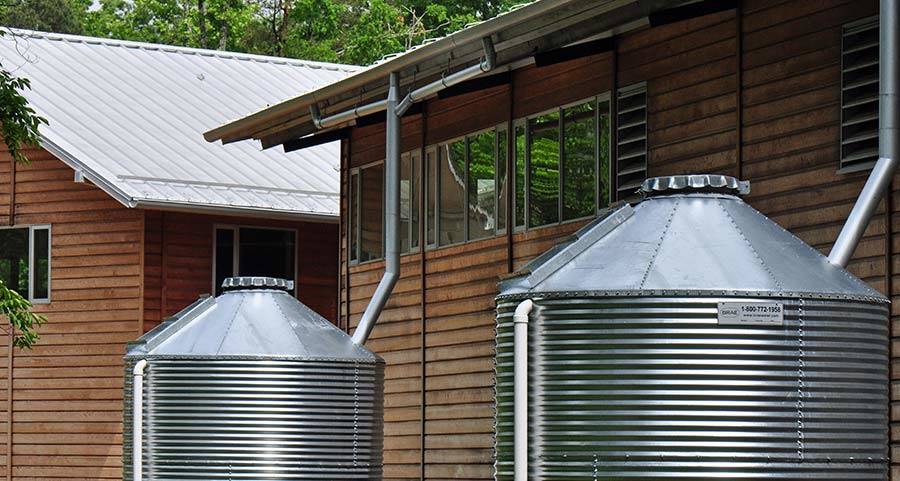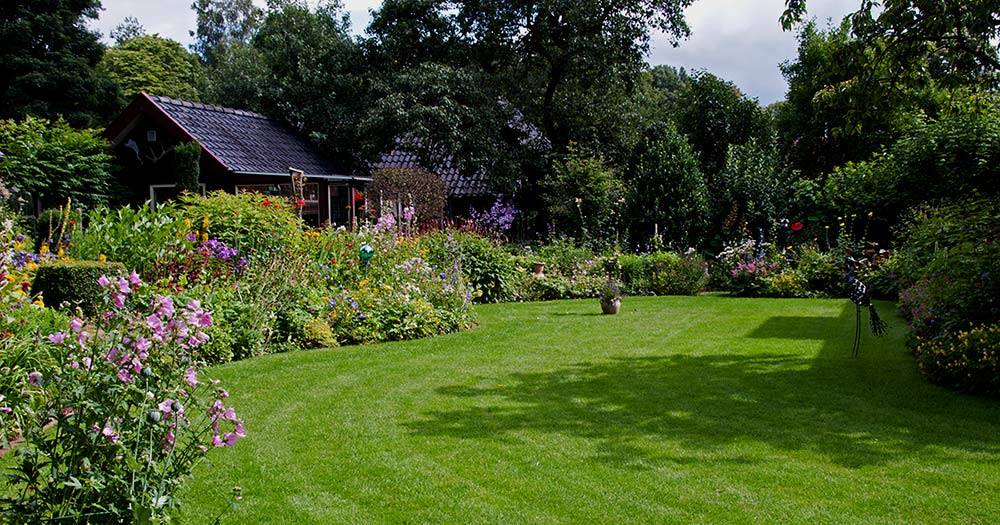Last Updated April 29, 2020
Naturescapes landscaping creates natural landscapes using locally-grown plants to design and implement your gardens. Designs work with the shape and contours of your outdoor space rather than working against them.
Naturescapes promote local biodiversity including a multitude of vital habitat components for:
- Wildlife
- Native grasses
- Wildflowers
- Trees
- Shrubs
- Hedges
- Ferns
Comparing Naturescapes vs. Traditional Gardens
Since your naturescape is comprised of local plants you will have a beautiful yard that can easily withstand your local climate conditions. This creates several benefits.
Less Lawn Care and Landscaping Maintenance
The local plant life in your naturescape requires much less maintenance than a conventional landscape design. Since those plants are meant to be in your yard’s environment, you will need to do much less:
- mulching
- fertilizing
- mowing
- watering
Instead, your yard will grow naturally. Saving you a lot of time.
More Cost-Effective
Naturescaping can also save you money.
Conventional lawn care may require the need to water your lawn regularly.
On average 30%-60% of your household’s water bill goes to lawn care. That fact alone should indicate there is a problem. Your natural landscape will need little or no extra water. As your local grass and plants are naturally adapted to rain conditions.
With naturescaping, you can dramatically cut down on your water bills. Saving you a lot of money.
Naturescapes are Environmentally Friendly
Naturescapes are environmentally friendly for your property. By choosing naturescaping, you can create a yard that promotes natural habitats for attracting native birds and small wildlife. There is an annual 5%-10% decline in songbird populations. A major factor is the loss of habitat. In contrast, naturescaping works to rebuild their habitats.
In addition, your naturescaping will also produce fewer chemicals that are harmful to the environment.
These benefits make your landscape safer and more enjoyable.
Naturescape vs. Traditional
| Naturescape | Traditional | |
|---|---|---|
| Design | Solution works with the land | Conforms land to solution |
| Plant types | Local | Any variety |
| Water Usage | Minimal | 30%-60% of household water usage |
| Wildlife | Support native wildlife | Contributes to decline of local wildlife |
| Maintenance | Less is needed to for plants in their natural environment | More is needed to for plants outside their natural environment |
| Fertilizers | Uses less | Uses more |
| Pesticides | Uses less | Uses more |
10 Keys to Naturescape Landscaping
Here are 10 tips to help you create an aesthetically-appealing naturescape for your outdoor space.
1. Enhance Your Dirt
Collect disease-free organic debris to compost and recycle it all back into your landscape. The process of development and construction in suburban and urban soils have greatly degraded the soil. Taking the time to put organic matter back into the soil is very important. Compost will help with
- water infiltration and retention
- builds up beneficial soil microbes
- provides plants with the nutrients they need
Follow nature’s example
Let dried leaves that have fallen remain on the soil under your shrubs and trees. All the benefits of mulch without the cost:
- hold moisture in
- inhibit weed growth
- break down to provide nutrients over time for the plant
Keep in mind you can compost pruned twigs, kitchen scraps, and more at home. By creating organic soil additions for your garden you can save on trash disposal fees, save landfill space, and reduce the impacts of transportation.
2. Herbaceous & Woody Plants
Create a year-round interest in your landscape by incorporating both woody and herbaceous plant species.
By using trees and woody shrubs you create a skeletal structure for your garden space. The branches and limbs can:
- make a visual framework
- create accent points
- provide privacy and shade
Herbaceous plants will give you a continuous texture and color from spring to the end of autumn. Focus on the texture of leaves just as much as the color of the flowers to evoke a sense of elegance.
3. Drifts & Masses
Create a sense of rhythm and line by planting in drifts.
When planting in drifts provide visual stimulation with the slight gradation changes in:
- color
- texture
- form
- land topography
A fundamental sense of order is created by plantings that are massed by identified groups. Use groups of 3+ individual plants to plant different species together. Then repeat the same species of plant groupings throughout your landscape or garden.
4. Right Plant, Right Place
Start by assessing your naturescape’s conditions. Take note of the locations of sun or shade, as well as the dampness in different areas.
Once you understand the conditions of each area, choose plants that flourish under those conditions. Pick plants whose largest shape and size and will meet both the area and its requirements. Planting too close and creating congestion can encourage ailments. Meanwhile not planting enough can promote weeds.
Choose good plants and plant networks. Look for conditions for local species that have co-advanced. They will usually have a stronger chance of enduring if their relationship is represented and perceived in the landscape. Avoid using forceful non-local and intrusive plants.
Avoid using plants that should be replaced each year. As well as ones that do not deal well with your environment and have the potential to die whenever the temperature drops below their ideal range. This is misusing your resources. Including your time and money.
5. Space Your Plants Wisely
Space individual plants at 1-foot-on-center for restoration projects. For house foundation planting or a home landscape, it’s important to space your plants based on their mature spread and height. This will allow a plant to grow to its full size. It also naturally promotes fullness, ultimate flower production, and overall health and vigor of the plant.
6. Keep Your Plants to Scale
The smaller the size of a plant the more specific your considerations for the placement and understanding of species arrangement are required.
You should choose plants that will not get taller than the width of the planting beds. An example of this would be if your planting bed is 4-ft wide, then the highest plant should not grow taller than 4-ft.
7. Conserve Water
Don’t use plants that need long-term irrigation.
Only irrigate plants until they are firmly rooted in the ground and grow enough foliage to support themselves.
Otherwise, only irrigate to supplement during an extended dry period of drought.
For efficient watering that is precise, and only where you need it, use drip irrigation. This will minimize weeds, and help you save water.
Use irrigation timers to allow watering at times that are optimal for your naturescape, but inconvenient for you. You will also avoid accidentally leaving the water running.
You should water your plants early in the day or in the middle of the night. That is when the soil cooler and the air is still. Also, use a mulch to keep soil moisture in. While inhibiting weeds that steal moisture and nutrients.
8. Capture stormwater on location

Stormwater heats up as it flows off of impermeable surfaces. When flowing across the asphalt to the nearest waterway it can pick up contaminants such as:
- auto oil
- dust
- heavy metal
- fertilizers
- pesticides
- other debris
Flooding and erosion can result from this excess water. It is often toxic to plant and animal life as well.
If your soil and slope allow, build a rain garden. This sunken garden bed allows you to direct runoff from your impervious surfaces such as a driveway or roof. Allowing the rain to soak naturally into the ground. Rather than ending up in storm drains.
For some structures, you can install a vegetated roof. Often referred to as a green-roof, eco-roof, or living wall. This helps to slow the flow of stormwater coming off a roof. Use pathways that are permeable instead of impermeable materials such as concrete. This allows the stormwater to soak through instead of running off.
If possible, install a catchment system to collect rainwater. You can use that water to irrigate and various other uses in your landscape and home.
9. Encourage microorganisms and beneficial insects
Use plants that will provide a larval cover or food source.
Don’t use pesticides or petroleum-based, synthetic fertilizers. These often harm the beneficial insects and microorganisms that are in the soil.
Microorganisms and insects create fertilizer for our plants by breaking down organic matter. Additionally, many insects pollinate your plants and help control some of your naturescape pests.
10. Mow Your Edges
Defining the edges gives your naturalized planting a deliberate look. Providing evidence of your active management. By maintaining mowing strips around the edges of plantings you create “cues of care” much like driveways or sidewalks.
Bonus: Sense of Place
Don’t lose a sense of where you are. Enjoy the uniqueness of your location. Don’t try something like recreating a lush tropical paradise in a dry, harsh desert environment. Keep your space local by choosing native local plants and locally produced soil amendments.
Conclusion on Naturescapes
Naturescaping has many benefits. For both you and the environment. You’ll save time and money while achieving a unique look. Additionally, the design and maintenance principles enhance the local ecosystem and are environmentally friendly.
That said, it can be difficult to establish a specific “look”, and allowing nature to take its course may look unkempt. This can be an issue in some places. Especially if there are strata agreements or Home Owner Associations (HOAs) with rules governing your yard’s appearance.
Even without such rules, naturescaping may get you sharp looks from neighbors. However, properly maintained, it should not be a problem.
Help with Your Naturescapes Landscaping Project
At Cider Mill Landscapes our trained horticulturists can help you design and implement a naturescape. We can guide you through the native plant choices and designs for southeast Pennsylvania to achieve the look you want.
Contact us at: 484.574.4666 or fill out the form below.
"*" indicates required fields

